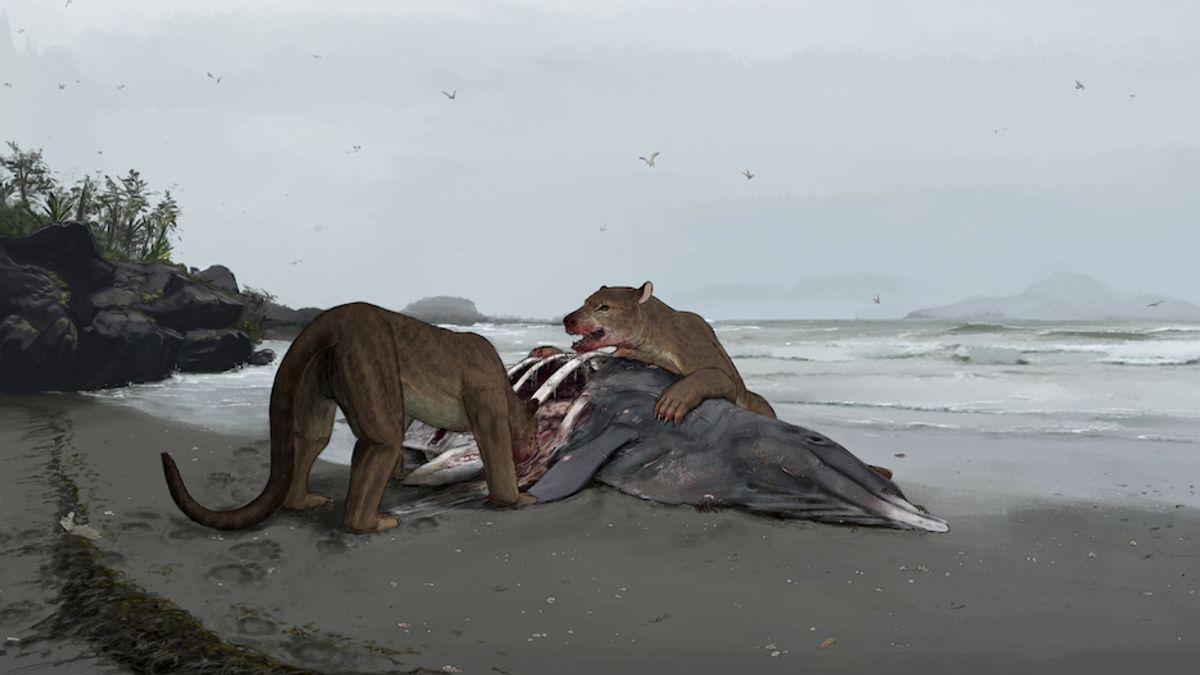JAKARTA - A new predatory species the size of a lion that lived between 7.5 million and 36 million years ago has been discovered in western Europe, in the mountainous area of what is now the Pyrenees.
A jawbone was found in marine deposits between 12 million and 12.8 million years old, which were examined in the small community of Sallespisse in the Pyrenees-Atlantiques region in southwestern France.
An international team of paleontologists, led by Dr Bastien Mennecart of the Basel Museum of Natural History, concluded the bones belonged to a group of carnivores known colloquially as 'bear dogs', who weighed about 320 kilograms and could crush bones with their teeth.
Dr Mennecart told The National News the find was an invaluable peace in Earth's history, due to the rare nature of fossil finds in the region.
"Climate change associated with competition with new entrants may be the cause of their extinction," he said, as quoted June 15.
He said it was likely that bear dogs would have been opportunistic, reclusive animals similar to today's bears, rather than running in groups like dogs. They would hunt for large prey, he said.
In addition, he continued, they will also 'patrol' the coastline looking for carcasses like dolphins.
The scientific name for this new species is Tartarocyon. The name comes from Tartaro, a powerful one-eyed giant from Basque mythology. The legend of Tartaro is also known in Bearn, the region where the mandible is found.
A report on the discovery was published in the peer-reviewed journal 'PeerJ'.
The scientists behind the report, Floreal Sole, Jean-Francois Lesport and Antoine Heitz, said the discovery of "land vertebrates living on the northern edge of the Pyrenees 13 million to 11 million years ago is extremely rare".
"The discovery and description of the mandible is even more significant. That's because it offers the opportunity to explore the development of European 'bear dogs' against the backdrop of currently known environmental events," they said.
The English, Chinese, Japanese, Arabic, and French versions are automatically generated by the AI. So there may still be inaccuracies in translating, please always see Indonesian as our main language. (system supported by DigitalSiber.id)













